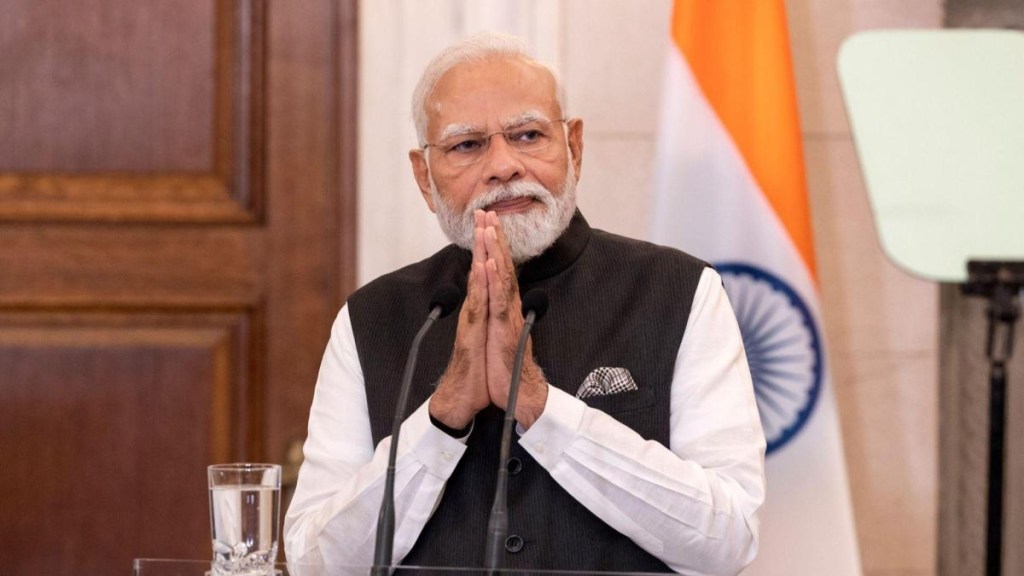Prime Minister Narendra Modi is a consummate showman. He seemed self-assured and at ease in the presence of world leaders at the G20 Summit. He has a team that meticulously prepares his speaking notes so that not a wrong word is uttered. And he knows how to occupy the camera frame without yielding an inch of space to any of his ministers.
The Hon’ble Prime Minister, as is his wont, kept the media at a distance. Not only did he insulate himself from the media, his government also ensured that President Joe Biden did not take any questions from eager journalists. So frustrated was the American delegation that they let it be known that Mr Biden will answer questions on the G20 meeting at his next stop, Vietnam!
Money was no constraint. Re-carpeted roads, trees, potted plants, grass, lights (and more lights), sculptures and billboards came up all over Delhi. The decorations were more than enough for one city. We could offer some unused material to the next venue, Rio de Janeiro. There was one face all over. Even the visiting leaders were not allowed a tiny bit of space in any billboard.
Some substance
Like all communiques, the Delhi Declaration had some lofty pronouncements. Example: “We meet at a defining moment in history where the decisions we make now will determine the future of our people and our planet.” I am sure similar words were used in previous Leaders’ Summits and will, no doubt, be used at the next meeting.
The positive outcomes were:
Finding the right words to describe the war in Ukraine without saying it was a war on Ukraine. That Russia and the United States (and its allies) found the formulation acceptable was a major achievement. Perhaps the absence of President Putin and President Xi helped. I got the impression that everyone wanted to put Ukraine out of the way so that they could get on with the job of addressing the economic issues which is the remit of G-20.
Expressing strong commitment to the WTO, to fostering a favourable trade and investment environment for all, and to a fully and well-functioning dispute settlement system accessible to all members by 2024. After the Trump tantrum of 2019, this is a welcome commitment. The presence of the persuasive Ms Ngozi Okonjo-Iweala, Director General of the WTO, must have ensured this outcome.
Reaffirming the commitment to reduce the gap in labour force participation, enabling inclusive access to employment opportunities, closing the gender pay gap, eliminating gender-based violence including sexual violence, harassment, discrimination and abuse against women, ensuring safe work places, and eliminating gender stereotypes and biases that perpetuate gender inequality.
Condemning terrorism in all its forms and manifestations, including those on the basis of xenophobia, racism and other forms of intolerance, or in the name of religion or belief, and recognising the commitment of all religions to peace.
The 34-page, 83-paragraph Declaration was, by and large, an endorsement of previous conclusions and on-going initiatives.
Slippery ice
India claimed — and the media faithfully reported — that it had acquired a pre-eminent status among the G20 countries and India’s Presidency in 2023 was a historical event. India also claimed that this status was due to its exceptional economic performance and the stewardship of the prime minister. Everyone knows that the G20 Presidency is not won through competitive bidding or in a race-to-the-winning-post. The Presidency goes by rotation. Next will be Brazil (2024), followed by South Africa (2025) and a new cycle will begin in 2026 with the United States.
Besides, the performance of the Indian economy in the last nine years has not been exceptional. India’s growth rate has been moderate (average of 5.7%). Even the reported growth numbers have been called out by, among others, Dr Ashok Mody, Visiting Professor at Princeton University. He has pointed out that the reported growth of 7.8% in Q1 of 2023-24 was based on ‘income from production’ while on the expenditure side the increase was only 1.4%, and the discrepancy was not explained. The NSO has treated the first number as correct and assumed that the second number will be corrected in due course. According to Prof Mody, “when we apply the BEA method to Indian data, the most recent growth rate falls from the headline 7.8% to 4.5%.” We don’t have to accept Prof. Mody’s conclusion but his observations about slowing growth, rising inequalities and job scarcity are indisputable. In previous columns, I have given data to support the observations about inequality and unemployment.
Keeping the growth numbers aside, I was pleasantly surprised by some of the promises and commitments made by India: central bank independence; MSMEs driving innovation and creating employment; discouraging protectionism and market distorting practices; portability of social security benefits; and ensuring that no one is left behind. I am convinced that to tackle this formidable agenda, either the government has to change its policies or the people have to change the government.
At present, India is nowhere near the top of the Group of 20. It is at the bottom in terms of per capita income, Human Development Index, labour force participation rate (LFPR), Global Hunger Index and some other parameters. I hope India will walk the talk at the G20 and earn its way to the top.

